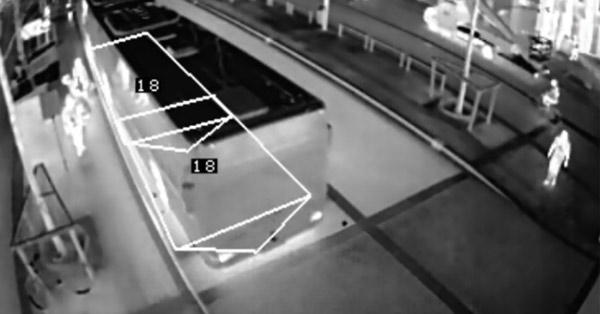Visual and Thermal Cameras Enhance Safety in Welsh Tunnels

FLIR has provided incident detection technology for the 360m-long Brynglas tunnels in South Wales (UK). A combination of smart visual and thermal cameras will notify tunnel operators of any potential hazard or incident occurring within the tunnel.
The twin-bored Brynglas tunnels are located on the M4 at Newport, South Wales. With about 80,000 vehicles passing through on peak days, the Brynglas tunnels are of major economic importance to the region. Incidents in these tunnels have immediate effects on traffic congestion and overall accessibility. That is why it is of crucial importance that vehicle-related accidents are detected and reported as soon as possible, so that response teams can intervene and secondary accidents can be avoided.
Trusted Partner
One of the tunnel systems CCSL had within its scope was the incident detection system. After a thorough market appraisal, CCSL selected the thermal and visual incident detection cameras from FLIR Systems, together with FLIR’s video detection management software, Flux.
“A tunnel refurbishment is usually a long and challenging process,” said Carl Cheetham, Technical Director at CCSL. “Hence, it is important to have a reliable partner along for the journey who can give you the required support. We had previously received excellent service and support from FLIR and this made the choice of supplier/partner a simple one.”

The Brynglas tunnels are of major economic importance to the region.
Visual and Thermal Incident Detection
The Brynglas tunnels now use 13 FLIR TrafiBot HD cameras with built-in Automatic Incident Detection (AID) functionality. The video feeds are analyzed locally at the camera before relevant alarms/events are generated and sent to the redundant Flux video management servers.
Additionally, eight FLIR FC-Series ITS thermal imaging cameras are installed at the entrances and exits of both tunnel bores. A visible-light camera can possibly suffer from sun glare if it is positioned to point outwards at the tunnel portal. As a result, the image for the portal areas would be blank due to light contrast and the camera would not be able to detect any potential incident around the portal areas. To avoid this, the first visual camera is pointed into the tunnel, while the blind spot underneath the camera and at the portal exit area are covered by the FLIR FC-Series ITS thermal cameras.
Video Management
An AID system is only as good as the information that is presented to the traffic control room operator. To enable rapid identification and notification of an incident, FLIR’s AID cameras and Flux video management system provide operators with an alarm within seconds of an incident occurring.
The Flux server acts as a management and storage unit in the AID system. Flux filters information generated from all cameras on the network and exposes only the relevant data to the SCADA via a Modbus TCP Interface. A Flux web client provides a user-friendly view of all cameras on the network.
Reducing False Alarms
“The FLIR incident detection cameras have been performing very well since their installation in April 2018,” said Carl Cheetham. “Thanks to a smart combination of visual and thermal camera technologies, FLIR has been able to reduce the false alarm rate to a minimum without missing real alarms.”
To download the full application story, fill out the form to the right.
Traffic managers across the globe use FLIR Intelligent Transportation Systems technology to keep our roadways safe and secure. Find out how FLIR products can control signals for vehicles, keep pedestrians and cyclists safe, detect incidents on roadways; and collect valuable traffic data in the FLIR Intelligent Transportations Guidebook.


